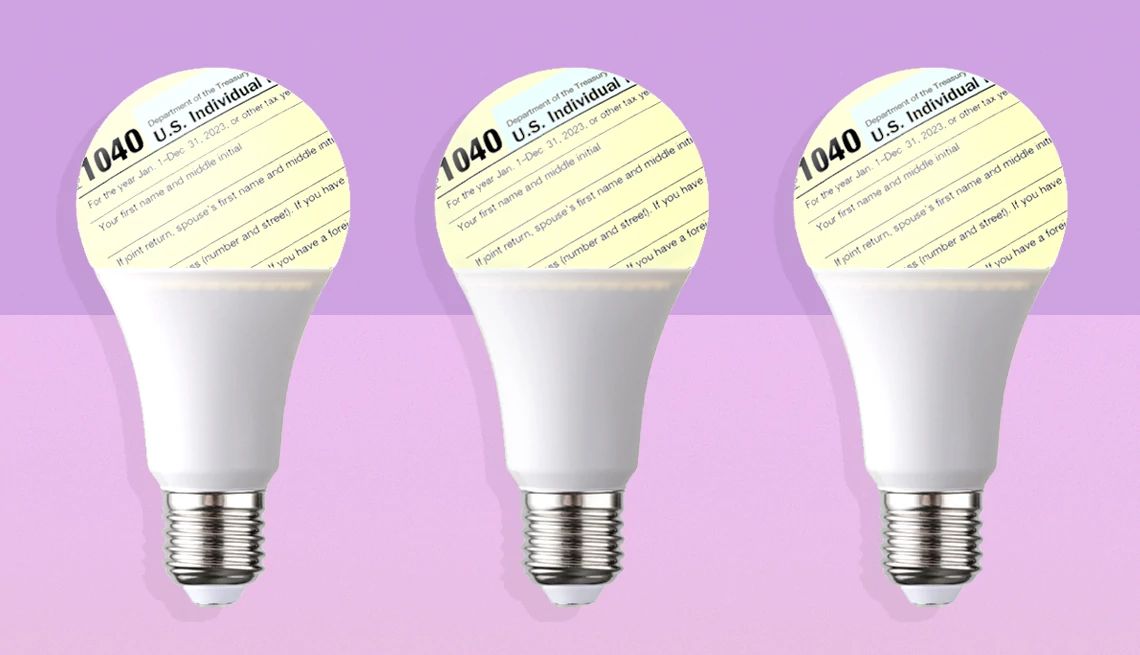AARP Hearing Center


A majority of Americans agree that tax season can be overwhelming. Two-thirds say that filing taxes is stressful, and nearly half admit they don’t understand how to fill out tax forms, according to a recent survey by market research firm Savanta. It’s no wonder taxpayers equate the process with truly painful activities.
“I had a client once tell me that every time he came to a meeting with me, he was reminded of when he went to the dentist for a root canal,” says Marianela Collado, a certified public accountant (CPA) and member of the personal financial planning committee at the American Institute of Certified Public Accountants (AICPA). “The value doesn’t come from the process but from reflecting on what the results are telling you.”
As much as you might want to avoid thinking about taxes again until next year, reviewing your 2024 tax return can provide some valuable insights into where you stand financially. There’s a lot you can learn about your income, spending habits, investment strategy and savings goals. Your return also can reveal whether you’re leaving money on the table.
Take the time to understand the numbers behind your 2024 return by paying attention to these 10 things. While it may not be enjoyable, the information can help guide your financial decisions in 2025 — and make next tax season less cumbersome.
1. Not all of your wages have to be taxed
With every paycheck, you can see how taxes eat away at your wages. However, reviewing your tax return can reveal ways to reduce your amount of taxable income. It’s an opportunity to ask yourself questions like, “Am I taking advantage of the full benefits of my employer’s 401(k) plan?” and, “Am I setting aside money for health care costs in a flexible spending account or childcare expenses in a dependent care flexible spending account?
These are key questions since contributions to employer-sponsored plans and accounts are made with pre-tax dollars, which reduces your taxable income. “Any opportunity to take your wages and chip away at them through this kind of low-hanging fruit that your company offers is a no-brainer,” Collado says.
2. You might be overpaying — or underpaying — taxes
If you’re getting a large refund, that’s not such a good thing. “All that says is that you’ve given an interest-free loan for one year to the federal government,” Collado says. “You could have been earning 5 percent on that money in a money market fund.” Adjusting your withholding can allow you to keep more of your earnings and grow that money in a savings vehicle.
Underpayments are a bad thing, too. If you owe Uncle Sam a lot of money, that’s a signal to file a new W-4 form and adjust your withholding proactively, says Collado. Or you might need to make or increase estimated quarterly tax payments if you have income from self-employment or investments.
3. A charitable contribution could provide a valuable tax break
Because most taxpayers no longer itemize thanks to an increase in the standard deduction, some have had to cut back on — or even stop making — charitable contributions. But instead of eliminating donations, there are ways you can time them better to earn a tax benefit when you itemize, says Henry Grzes, a CPA and lead manager on the AICPA’s Tax Practice & Ethics team.
For taxpayers who are close to being able to itemize but not quite there, making a large charitable contribution before the end of the year could move the needle. If you make a cash donation, you can typically deduct an amount up to 60 percent of your adjusted gross income (AGI).



































































More From AARP
6 Tax Breaks If You Have an Adult Dependent
Caring for a parent or other family member could cut your income tax bill
10 Things You Need to Know Before Filing Your 2024 Tax Return
How to file on time, speed up your refund, avoid scammers and more
2025 IRS Tax Deadlines You Can’t Afford to Miss
Is Tax Day April 15 this year? When are estimated taxes due? Our federal filing calendar has the answers
Recommended for You